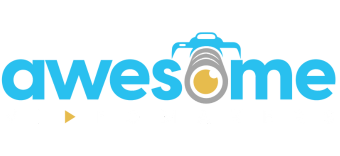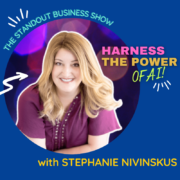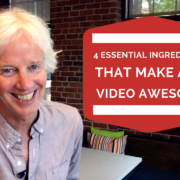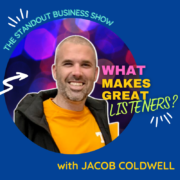3 ways to get your target audience thrilled about your big idea
There are few things more frustrating than pouring your heart into your big idea only to see it struggle to take off.
Whether you’re organizing a project, promoting an event or selling a product or service, there’s nothing worse than spending weeks or months of effort to make something happen – and then nobody shows up, or your phone isn’t ringing, or you’re making videos that nobody’s watching.
When this happens it’s problem of enrollment – you’ve failed to fully enroll your target audience.
In their fantastic book, “The Art of Possibility,” co-authors Benjamin an Rosamund Zander spend an entire chapter talking about what it takes to get someone fully enrolled. “Enrolling is not about forcing, cajoling, tricking, bargaining, pressuring, or guilt tripping someone into doing something your way. Enrollment is the art and practice of generating a spark of possibility for others to share. Have no doubt that others eager to catch the spark”.
Can you imagine a world where others are eager to catch your spark?
The Zanders suggest that you approach enrollment as lighting a spark of possibility in others and then be ready to catch their spark in return. Enrollment will take courage in the face of possible rejection(s). Maintaining your passion and a mindset of possibility is essential.
Ready to fully enroll your target audience? Here we go.
1. Join the conversation
In my earlier post on how to introduce yourself on video so that it matters I was dissing social media by saying it’s turned us all into one-way broadcasters – and you only have to spend 10 seconds looking at anyone’s Twitter feed to see the sad truth in this.
But, there’s also a conversation going on about your thing.
To find the conversation, search hashtags on Twitter and Instagram (like #smallbusiness or #communitygarden or #climatechange) or join a Facebook group or go to a local Meetup – you’ll find out what your people are talking about.
You’ll want to look for what they’re saying about the problem that you want to help them solve.
2. Look for questions, frustrations and desires
These are the things that are most relevant to the people who you are wanting to enroll. Personally, the place where I’ve found the most engaged conversations have been in a few of the Facebook groups that I belong to. (and, of course, my own Facebook group)
What you’ll discover are points of engagement. You’ll see questions that generate long threads of discussion and learn which kind of frustrations or desires resonate most.
It doesn’t matter if you think they’re asking the right questions – these are the questions they’re asking – so that’s where you want to start engaging.
3. Respond with something different
You’re going to discover that people have already tried a lot of things to answer their questions, fix their frustrations, and make their dreams come true. If it’s available they’re checking it out. You need to take the time to study what else is out there too, so you can respond with something unique – something they haven’t tried yet.
How does this work in practice?
Here’s an example based on how I like to engage. Let’s say my preferred method of connection is to go to a networking event or a conference. What I find at almost every business related event is plenty of people (like me) who offer marketing services of one kind or another. In fact it sometimes feels like the room is full of marketers.
And everyone there is introducing themselves with the same question, “What do you do?”
And everyone answers the same way – by talking about themselves.
At an event like try entering the conversation, by saying something different. What if you refused to give an answer by talking about yourself. What if instead you answered by responding to the questions, frustrations and desires that are on the minds of practically everyone in the room?
So, for example, after someone asks me what I do, I might answer with, “I like to help people have more meaningful interactions at networking events (like this one) so they meet the kinds of people they’re looking for, attract the right kind of clientele and so they don’t end up feeling like they’ve totally wasted their time.”
See what I did there?
Now I’m talking about the questions and desires and potential frustrations of practically everyone in the room. All of a sudden I’m positioning myself as someone who might have something different to talk about – and be offering the possibility of a unique value proposition.
Whoever I’m talking to is probably wondering, “What you just mentioned is something that I want to know more about – how do you do that?” So, we can keep talking and I can keep asking questions and learn more about their frustrations and desires.
This is exactly what you want to do.
Don’t enter the conversation by talking about your big idea – start by talking about the thing that is their top of mind frustration or desire. If you’re unsure of what that is, then ask a question.
You can craft content like this in your videos and share it on social media, and when you do people will start thinking you’re reading their minds.
if you’d like more interaction than this once-per-week blog post, join my Facebook Group and leave your comments there >









